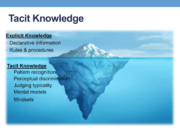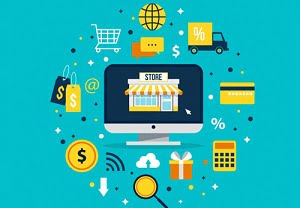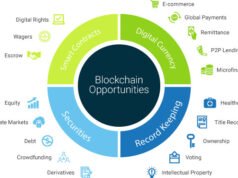Introduction
This article is directed at offering a plausible framework for integration of Blockchain and Machine Learning in the Retail frontier of the Value chain. The operations focused on to re-architect are critical to Customer satisfaction, Provenance, Data interoperability and most importantly Trust. While anchoring these mentioned factors as a basis in the blueprint development process for implementation of these technologies we shall delve deeper into defining Blockchain use cases and Machine Learning Analytics objectives. The framework described further incorporates realistic and feasible capabilities regarding how retailers can reconfigure the customer journey mechanisms.
In the current global setting of the Fourth Industrial revolution, integrating disruptive technologies like Blockchain, Machine Learning, IoT and robust scalable Big Data architectures that fortify the functions of these technologies, has become a requisite to redefining value creation in the retail sector. Being an operations management student of MBA I have been enlightened with the understanding of the important role of Retailers as the Last mile in the supply chain by my professor Dr. George Easaw. Retail stores are the direct point of interaction with the ultimate consumer, it is at this stage significant level of data is generated pertaining to consumer preferences, grievances, feedback and demand information for specific products and product lines.
Keeping the above in mind we have to contemplate on:-
- How Blockchain can establish a seamless circuit of information flow across the critical participants of the Supply Chain as whole in a transparent and immutable manner to create Data and transactional Integrity.
- For capitalizing on the profusion of data related to demand, preferences, feedbacks and purchasing patterns ML Models can be trained and deployed upon the chain for clustering of consumers & decision optimization for supplier selection and new product road mapping.
Defining the technologies
Let’s first understand the Blockchain technology which will underpin the new formulated architecture. Blockchain is a Distributed Ledger Technology (DLT) which runs on Peer to Peer network architecture where addition of each new block adheres to a consensus protocol among the network participants through consensus algorithms. Each of these blocks are cryptographically linked in an immutable manner and network participants have their own copy of the ledger to increase transparency and trust. This an autonomously updated and validated real time ledger which cannot be manipulated any single network participant owing to its decentralized consensus design.
Machine Learning is a sub discipline of AI which specifically comprises Statistical and Mathematical learning Models for deriving meaningful inference out of the data. It requires voluminous amounts of training data to refine the constructed model such that the patterns in the data are accurately and optimally deciphered to offer a meaningful and reliable analysis. Machine learning is decomposed broadly into two categories, Supervised and unsupervised Learning, the difference rests on the need to manually label datasets for the corresponding algorithms learn from.
How is IBM harnessing the power of the Blockchain?
Specifically IBM is mentioned in the view of the fact that IBM is the only enterprise which is entirely transforming the businesses of global retailers using Blockchain solutions. IBMs strategy as a leader in this market is gravitated towards establishing what we can envisage as a new standard of trust, transcending the old notion of brand loyalty. How do they do it? By focusing on now that is the new norm which is supply chain visibility to instill a sense of trust among the consumers, to enable this shift supply chain partners must know exactly where their products are in seconds. Today consumers need to be assured in the dimensions of quality, reliability, authenticity and product safety.
IBMs business Blockchain collectively creates benefits for Consumers by enhancing product trust, suppliers by showing how ethical is the sourcing and how emerging demands can be met, retailers by building brand value through capitalizing on the new customer insights. The Company has thoroughly reinvented the businesses of major retail brands like Dole, Kroger, Walmart, Nestle, Tyson foods, Unilever, Carrefour and others through instituting clarity in their food Supply Chain.
Understanding this use case
It’s this convergence of Blockchain and ML are our endeavor’s aimed at effectively orchestrating for this use case, as both of these technologies are mutually complementary. The usual routine of retail shopping is that consumers choose from variety of products at a good price, nowadays however consumer satisfaction is taking a new form that they are getting more vary of even the product’s sourcing as in where it was made, practices undertaken in its manufacturing and its sustainability impact. Now some might wonder why would the consumers care about all these seemingly trivial factors, Nielsen’s research report holds that in the clothing retail sector for 66% of the global consumers and 73% of the millennials their product preference is rooted in their disposition towards the products sustainability and are even willing to pay more if it is so. Consensys.net covers this use case in greater detail click here .
As far as Transparency is concerned, it is tied directly to Brand trust which eventually translates into increased customer loyalty and lifetime value. Product transparency becomes very important on the trajectory towards increasing consumer engagement, in fact according to a HBR article ’What Supply Chain Transparency truly means’ its graphically represented that the ‘product innovators ‘are completely transparent on the basis of full disclosure of their sourcing of raw materials, indirect suppliers, direct suppliers and internal operations. Providing transparency becomes a vexing task as the organization grows larger thus exposing gaping holes for counterfeiting which alone cost the world economy $323 billion, material quality compromise and substandard practices, so the need for proper provenance rises.
Rethinking the Customer journey routine is critical for continual improvement in quality and new product introduction in the Retail stores and this hinges upon a seamless flow of real time validated information across the echelons of the Supply Chain like Manufacturers, distributors and Wholesalers. Here Blockchain is likely to be the lucrative solution as it’s a decentralized ledger which is constantly updated and validated by the network participants on the basis of consensus protocol, so it is immutable. Since the Blockchain type suitable for an enterprise is a private permissioned Blockchain the network participants would constitute Manufacturers, distributors, Wholesalers and even suppliers of the manufacturers so as to establish complete transparency of the processes critical to each other’s success.
Hyperledger Blockchain frameworks developed by the Linux Foundation are specifically developed for Business Use cases. For supply chains the preferred Hyperledger framework is ‘Sawtooth‘ as its instrumental in bringing about Accountability and traceability in the Supply Chain and benefits like location tracking, motion shock, tilt, temperature, humidity and ownership transfers.
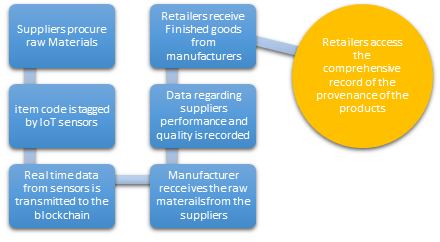
For accountability the ledger will maintain a transparent record of supplier performance and rate it with a common score, as for traceability it will capture IoT sensor data at every waiting point about location, condition and personnel used for handling with a timestamp. The Blockchain will also incessantly capture customer data points in the form of text data, demand quantity data, product preference data, purchasing data and any other meaningful form of data. This data can be leveraged by the entire value chain to unlock valuable insights using ML.
Machine Learning Models have to trained and tested on datasets specific to the objective of the Business use
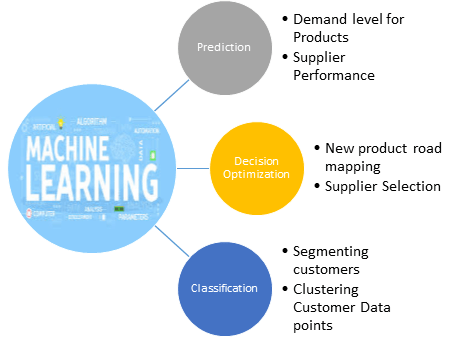
From the above visuals it is apparent that the Machine Learning Models which will be developed would serve specific use cases where the Business and customer impact is Maximum. Further when the frame work is elaborated we shall get a stronger grasp of the Interplay of Blockchain and ML.
The Framework

Data Lake layer :
This type of database solution which is robust and highly scalable is ideal for Big Data analytics and optimization
- It can store and analyze petabyte-size files and trillions of objects
- Huge sets of structured, semi structured and unstructured types data can be stored without any limit.
- For Blockchain framework this type of robust storage solution is instrumental owing to its scalability and ability run massively parallel programs with simplicity
- Moreover Blockchain has a decentralized architecture so transaction processing speed is a challenge however private Blockchain’s can process thousands of transaction per second but as the enterprise grows emphasis on scalability increases.
- Data Lakes eliminate the complexities related to ingesting and storing the data while enhancing the capacity to run real time streaming and interactive analytics
- This type of solution seamlessly connects operational data stores and warehouses which would make it highly viable for Blockchain’s to establish connection across all the nodes of the supply chain participant’s databases and execute smart contracts.
- Mongo DB, Big chain DB, AWS and Azure offer this type of solution
Blockchain layer
This layer is focused on establishing a seamless circuitry of data interoperability among the nodes of the Retailers value chain
- .For Supply Chain and retail Hyperledger sawtooth is ideal owing to its flexible and modular architecture which separates the core system from the application domain so smart contracts can specify business rules without needing to know the underlying design of the system.
- Consensus algorithms used as a consensus protocol for arriving at a collective decision are developed, the algorithms should be in tune with the use for consensus on supplier performance, Consensus on Critical To Quality (CTQ) factors of consumers and consensus upon viability of New product introduction on the basis of validated demand data. The sawtooth framework supports a variety of consensus algorithms.
- Smart Contract logic is encoded for data sharing among the network for fortifying trust regarding the usage of data. Example: The retailers will enter into smart contracts with shoppers through app for ethical usage of their data. This data on smart contracts, users and network participants will be directed to the data lakes.
- Hyperledger offers tools for Blockchain deployment and monitoring like Calipher, Avalon, Explorer, Cello and Cactus, which are necessary in addition to the frameworks. These tools are used for querying blocks, data stored in the Blockchain, checking chaincodes, maintaining container platforms and virtual machines.
Machine Learning Models
Now that the Database layer and Blockchain architecture are instituted, Machine learning Models have to be deployed on top of them. The deployment of those models should be conducive to a decentralized database architecture. The data used by the models would that which will be captured by the Blockchain Ledger.
Looking at figure 2 it is clear what are the use cases of each Model, Now it must be decided what kinds of algorithms would used for each of this purpose, below are what I reckon might be the probable algorithms.
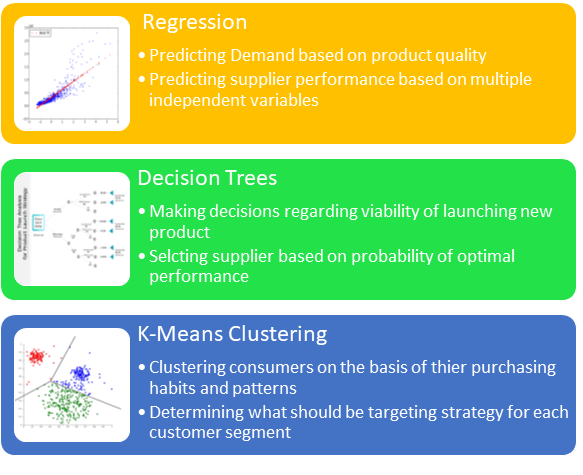
Application Layer
At the application layer there shall be an unique interface for each, the suppliers, the manufacturers, the retailer and for the ultimate consumer through Mobile App. The presupposition for customers interface is that the retailers has multiple channels both online and offline. So Below described are the features of every participants interface
Customer
- Through the Mobile app of the retailer customers will get relevant detailed information of every product they purchase along with provenance information.
- Customers will get accurate recommendations on the basis of their preferences
- They will get updated on every new product in the stores which is relevant to their preferences
- Their feedbacks and suggestions on every product will be well documented by the manufacturer and retailer through the Blockchain.
Retailer
- The retailer will have complete dashboard on the customer data highlighting their preferences through data visualization tools
- Clustered representation of customer segments based on shopping history
- Tools for mining customer feedback data and updating those insights in the ledger to be seen by Manufacturers and suppliers
- The retailer will be able to view the decentralized score of the suppliers to assign a probability for selecting them using decision optimization model.
Manufacturer
- Based on the mined feedback data updated in the ledger by the retailer the manufacturer can identify the CTQs and transmit that data to its production department so that. Due to this data interoperability errors in processes and product design can be spontaneously eliminated.
- Capture demand data updated by the retailers end to determine production schedules and procurement requirements
- Use decision tree models to discern the feasibility of launching a new product. The product conceptualization would be much easier and quicker due to availability of real time consumer insights.
- Communicate the CTQs and demand data with the suppliers to expect improvisation in performance, supplier performance can be predicted using regression models.
Supplier
- The suppliers will be able to see the demand levels to optimize their inventories so as not to have any shortage or excess.
- Manufacturers concerns will be documented to improve performance
- Score value of the suppliers will be visibly attached to their identity to depict their status in terms of quality, time and reliability.
Necessary precursor
Now that it is significantly discerned what could be the mutually reinforcing characteristic of the interplay between Blockchain and Machine Learning, it can be obvious to say that an offensive data strategy is substantial to provide a resilient strategic underpinning for the use case to gain merit. In the HBR article ‘ What is your data strategy? ‘ it is well instantiated as in which setting is favorable for an offensive strategy, we can even infer from the diagram that retail sector being the least regulated harbors a great potential for cultivating the data for prognosticating future customer, market and supply chain trends.
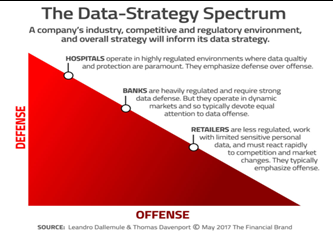
Decentralized database structures are conducive to this stance, which can be realized through Blockchain owing to its decentralized architecture and high capacity for data interoperability. The above referred HBR article also asserts that decentralized budgets created for accommodating offensive strategies are closer to the business case and have visible ROIs.
Since our objective is to enable a seamless flow of real time data across the Supply Chain partners an offensive data strategy will make the value chain more transparent, agile and responsive to the prevailing market trends and cater to the customer preferences. Moreover when the ML algorithms are deployed on the data, there will be a recursive improvement in the accuracy of the inferences due to ingesting real time validated data through the Blockchain records otherwise when the data is held up in silos or not validated the inferences tend to be misleading and obscure.
Conclusion
After pondering upon this possible framework for Blockchain and ML integration in the Retail value chain it can be conveniently inferred that the business case must be compelling enough so as to achieve high ROI. Here there is call for action for retailers to transcend the traditional operations target of Local optima to through collaborative strides establish a Global Maxima for the entire Supply Chain altogether. Having a robust data strategy helps to embrace agility, here we could understand how Blockchain can materialize it with Machine learning, being twin forces of disruption. Moreover this stance can enlighten customers with a heightened sense of realization that the products they consume are 100% authentic and that no unethical practices were undertaken in their journey from the supplier to the shelf. Finally there shall be an undeterred emphasis on further innovating on the consumer Mobile application enough that the resultant applications espouse the critical factors to the now evolving essence of customer satisfaction.















